Wandering by Bicycle
Traveler
I posted this on my website, but I've had enough people ask about the truck and it's build that I figured I'd post it here as well.
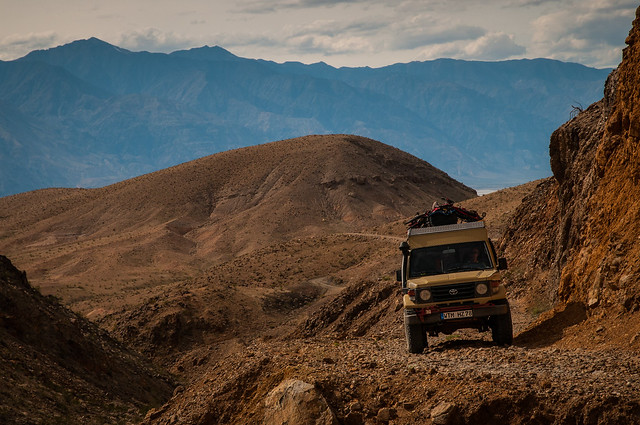
It gets quite a bit of attention in the States because it's one of the Land Cruiser models that were never imported here. The base truck is a 2000, left hand drive, Toyota Land Cruiser HZJ78 two door troop carrier, or Troopie as many people refer to them, with a few options from Toyota; air conditioning, an air intake snorkel, and electronic differential locks front and rear. Besides this, from the factory, it's a stripped down bush taxi with roll up windows, no carpet and minimal gauges.
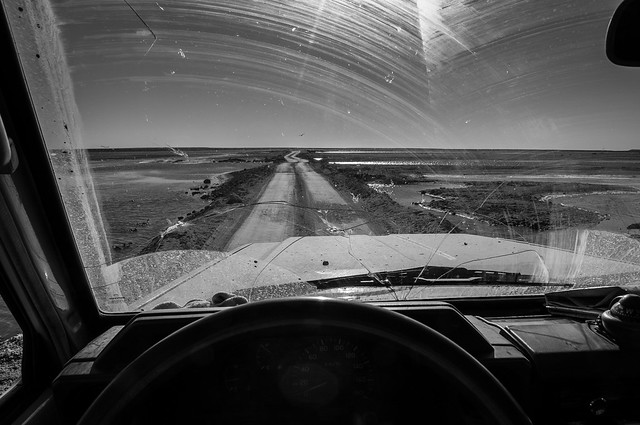
The engine is a stock 1HZ 4.2 liter 12 valve naturally aspirated diesel with 129 horse power and just over 400,000 kilometers. That may seem like a lot of k's, but these engines are amazingly well built, reliable as they come, and easy to work on. It's mated to a 5 speed manual transmission from an 80 series Land Cruiser. The axles have electronic differential locks and are specific to the 70 Series Land Cruisers, with the front being a heavy duty closed knuckle Birfield joint style and the rear a heavy duty full floating design. For tires, it's shod with the now discontinued 255-85-16 BF Goodrich Mud Terrains.
Now on to the good stuff. The most obvious from the outside is the roof, which is a pop-up roof made by Desert-Tec.
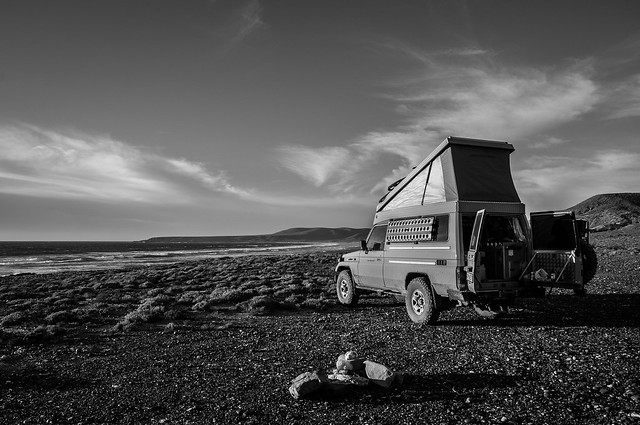
This roof is amazingly well built, I can walk around on the top and there is no flex whatsoever. The slant opening roof, while limiting in space, is preferred by us over the straight pop-up style for it's strength and reduced noise in high winds.
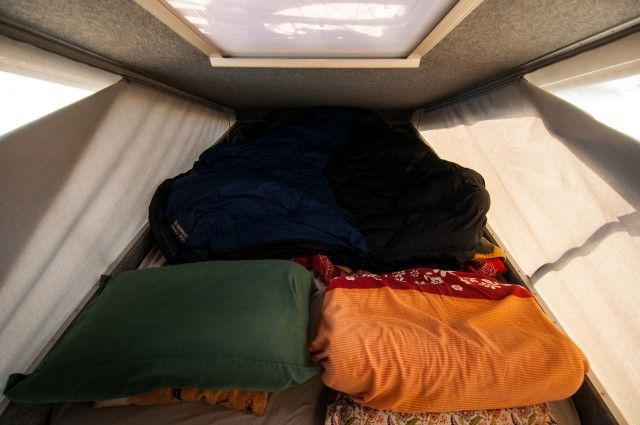
On top of the roof is a 100 watt solar panel that charges a 105 amp hour auxiliary battery behind the passenger seat. This battery is hooked to an inverter for charging our various electronics. There is an isolator that also allows the battery to be charged by the alternator while the truck is running and the solar panel also charges the main truck batteries when the auxiliary battery is fully charged.
Inside, the stock rear bench seats have been replaced with custom storage cabinets with three compartments on the drivers side and six on the passengers.
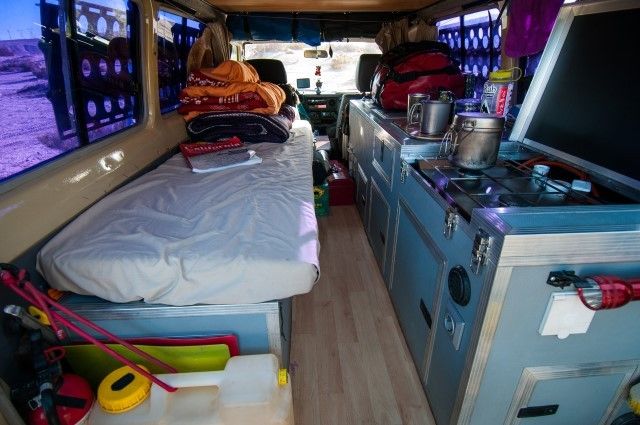
There is also a sink with a water purifying filter and a propane stove built into the passengers side cabinet and a single mattress, for sitting or solo sleeping, on top of the drivers side. We use removable water containers, stored inside one of the compartments, for ease of filling and to prevent the water from freezing in cold temperatures.
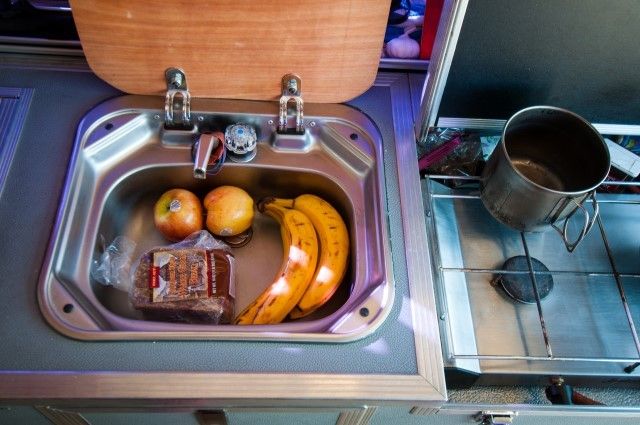
Behind the drivers seat, which has been replaced with a Recaro (the passenger suffers with the stock Toyota seat), is an Engel refrigerator/freezer. For heating with the engine off, there is a Webasto heater that runs on diesel.
We try to balance the tools and spare parts we carry with the probability of need and ease of acquiring. In addition to the duct tape, zip ties extra fluids and miscellaneous nuts and bolts, we carry extra filters, belts, bulbs, seals and and even a replacement Birfield joint. Obviously, there's also a compressor, hardwired to the auxiliary battery behind the passenger seat, as well as a wide range of tools, tailored to this truck, to fix most anything. For the how to fix anything information, I have the factory repair manuals, as well an an electronic parts catalog, on my laptop.
[URL=http://s288.photobucket.com/user/jhfonty/media/The%20Toyota%20Land%20Cruiser%20HZJ78%20Camper

It gets quite a bit of attention in the States because it's one of the Land Cruiser models that were never imported here. The base truck is a 2000, left hand drive, Toyota Land Cruiser HZJ78 two door troop carrier, or Troopie as many people refer to them, with a few options from Toyota; air conditioning, an air intake snorkel, and electronic differential locks front and rear. Besides this, from the factory, it's a stripped down bush taxi with roll up windows, no carpet and minimal gauges.

The engine is a stock 1HZ 4.2 liter 12 valve naturally aspirated diesel with 129 horse power and just over 400,000 kilometers. That may seem like a lot of k's, but these engines are amazingly well built, reliable as they come, and easy to work on. It's mated to a 5 speed manual transmission from an 80 series Land Cruiser. The axles have electronic differential locks and are specific to the 70 Series Land Cruisers, with the front being a heavy duty closed knuckle Birfield joint style and the rear a heavy duty full floating design. For tires, it's shod with the now discontinued 255-85-16 BF Goodrich Mud Terrains.
Now on to the good stuff. The most obvious from the outside is the roof, which is a pop-up roof made by Desert-Tec.

This roof is amazingly well built, I can walk around on the top and there is no flex whatsoever. The slant opening roof, while limiting in space, is preferred by us over the straight pop-up style for it's strength and reduced noise in high winds.

On top of the roof is a 100 watt solar panel that charges a 105 amp hour auxiliary battery behind the passenger seat. This battery is hooked to an inverter for charging our various electronics. There is an isolator that also allows the battery to be charged by the alternator while the truck is running and the solar panel also charges the main truck batteries when the auxiliary battery is fully charged.
Inside, the stock rear bench seats have been replaced with custom storage cabinets with three compartments on the drivers side and six on the passengers.

There is also a sink with a water purifying filter and a propane stove built into the passengers side cabinet and a single mattress, for sitting or solo sleeping, on top of the drivers side. We use removable water containers, stored inside one of the compartments, for ease of filling and to prevent the water from freezing in cold temperatures.

Behind the drivers seat, which has been replaced with a Recaro (the passenger suffers with the stock Toyota seat), is an Engel refrigerator/freezer. For heating with the engine off, there is a Webasto heater that runs on diesel.
We try to balance the tools and spare parts we carry with the probability of need and ease of acquiring. In addition to the duct tape, zip ties extra fluids and miscellaneous nuts and bolts, we carry extra filters, belts, bulbs, seals and and even a replacement Birfield joint. Obviously, there's also a compressor, hardwired to the auxiliary battery behind the passenger seat, as well as a wide range of tools, tailored to this truck, to fix most anything. For the how to fix anything information, I have the factory repair manuals, as well an an electronic parts catalog, on my laptop.
[URL=http://s288.photobucket.com/user/jhfonty/media/The%20Toyota%20Land%20Cruiser%20HZJ78%20Camper
Last edited:
